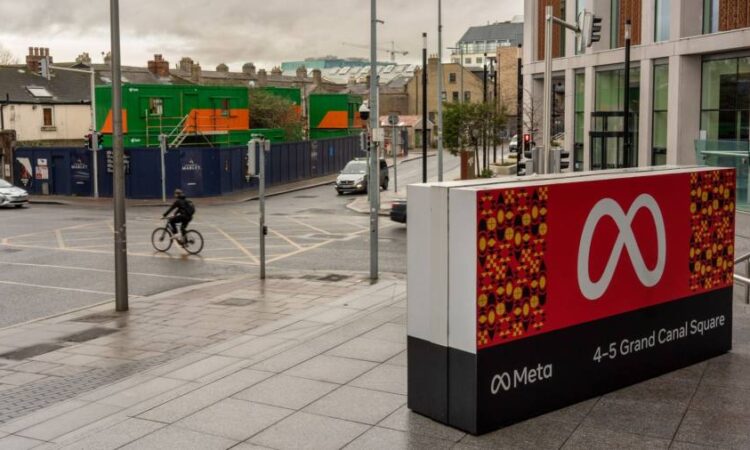
Ireland’s central bank governor has defended the country’s world-beating economic growth against accusations that it is an artificial product of big US companies taking advantage of Dublin’s low taxes.
Gabriel Makhlouf told the Financial Times that much of Ireland’s growth — forecast to be 12.2 per cent last year, more than treble growth in the overall EU — comes from “real factories with real people” even if a lot of activity stems from big technology and pharmaceutical groups.
“Too many people think or jump to the conclusion that this is all about intellectual property that’s sort of moving around and it’s not real, and that’s wrong,” Makhlouf said.
“This stuff, especially in pharma, it’s made in Ireland. There are people in Ireland. There’s a remarkable proportion of the top ten medicines in the world [that] are made in Ireland,” he said. “One of the oldest multinationals in Ireland is Intel and they also make stuff.”
The debate about Ireland’s economic outperformance flared up recently after the country’s 3.5 per cent quarter-on-quarter growth in gross domestic product single-handedly prevented the eurozone economy from stagnating in the final three months of last year.

Critics say Ireland’s GDP is distorted by the accounting manoeuvres of large US multinational groups capitalising on low Irish tax rates. When Apple moved intellectual property assets to its Irish base in 2015, it helped to send Ireland’s GDP up 25 per cent, which Nobel-prize winning economist Paul Krugman called “leprechaun economics”.
After Ireland’s Central Statistics Office published its 2022 growth estimate of 12.2 per cent last month — the highest in the OECD club of rich nations — the Irish Times wrote that the country’s economic data “should carry a health warning” because it was “meaningless as a guide to how the economy is doing”.
Many big US companies — including Google, Apple, Meta, Intel and Pfizer — have their European bases in Ireland, which has a relatively low 12.5 per cent corporation tax rate. The country is also a global hub for aircraft leasing. This helped its economy to rebound strongly after an earlier “Celtic Tiger” boom came to a sudden end in the 2008 financial crisis.
Even before last year’s growth, Irish GDP had more than doubled since 2014, according to Eurostat, the EU’s statistics office. That dwarfs the overall EU economy’s 23 per cent growth in the same period.
The Irish central bank uses alternative growth measures to strip out the impact of multinational companies and get a better picture of domestic demand. One is a version of gross national income, known as GNI star, which the central bank expects to show much slower growth of 5.9 per cent in 2022.
Makhlouf said exports by multinational companies in Ireland “have gone up and they’ve been a big driver” of the country’s growth. “They do distort our stats, which is why . . . because a lot of the profits go back to the parent — they don’t sit in Ireland — we don’t use GDP.”

The outlook for Irish growth has weakened recently, Makhlouf said, due to high inflation, rising interest rates and slowing global growth. A further blow could come from a wave of job cuts announced recently by several big tech groups that is expected to hit their Irish units.
Last year there was unusual volatility in Ireland’s industrial production data, which regularly rose or fell more than 10 per cent from one month to the next, prompting the statistics office to review how it calculated seasonal adjustments.
The Irish central bank said some of this volatility stemmed from “relocations of balance sheets to Ireland” by large multinational companies, as well as “volatility of output” by these groups in sectors such as chemicals and pharmaceuticals.
“GDP has been a consistently unreliable guide of the underlying performance of the Irish economy since 2015 in particular,” said Dermot O’Leary, chief economist at brokerage Goodbody.
He said the activities of multinational companies, including “the onshoring of intellectual property, merchanting and contract manufacturing” had all contributed towards “distorting Irish GDP, especially in the short-term.”
But he added: “The activities of the multinationals are real and have had a visible impact on the prosperity of the Irish economy over recent years.” Employment from foreign direct investment rose 8 per cent on average in the past five years in Ireland, he said. “These are high-paying jobs,” which he said had “contributed to an extraordinary rebound in tax revenues on top of the boom in corporation tax receipts”.
The Irish unemployment rate more than halved in the past seven years to 4.4 per cent in January. The country’s corporation tax receipts rose 68 per cent in the year to August and the central bank predicted they would surpass €20bn for the first time last year. Irish exports rose 25 per cent last year to hit a record high of €208bn.






